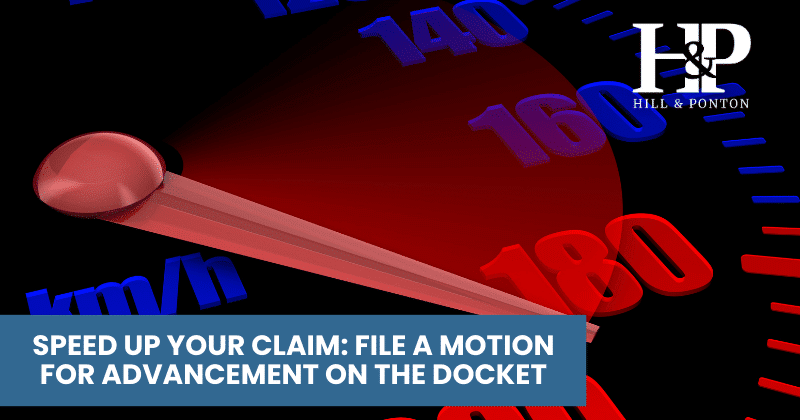Defining New & Material Evidence
New and material evidence is defined as existing evidence not previously submitted to agency decision makers that, by itself or when considered with previous evidence of record, relates to an unestablished fact necessary to substantiate the claim. It’s easier to think of this definition as a two-part test:
- Part 1: New evidence is existing evidence that has never been submitted to the agency (i.e. the Regional Office). To determine if evidence is new ask yourself, “Is the evidence cumulative or repetitive of the evidence that was already considered at the time of the most recent denial of a claim?” If so, the evidence cannot qualify as new and material evidence. If the evidence is NOT cumulative or repetitive, then the evidence is new and you should move on to part 2 of the definition.
- Part 2: Material evidence is evidence that by itself, or when considered with previous evidence in the record, is related to a fact that would show there is a valid claim. To determine if evidence is material ask yourself, “Does the evidence raise a reasonable possibility of substantiating the claim? If not, then the evidence cannot qualify as new and material?”
Let’s look at an example of new and material evidence. A veteran obtains a private medical record that lists ischemic heart disease as one of his diagnoses. The veteran has never submitted this record to the VA, and the veteran’s VA Claims File contains no records diagnosing him with ischemic heart disease. This private medical record would be both new and material evidence.
How to Use New & Material Evidence
New and material evidence serves two important functions in the VA claims process. The first function is reopening a claim that has been previously denied. The second function of new and material evidence is as a tool to get an earlier effective date. Let’s look at each function in more detail:
- Reopening a claim
- Getting an earlier effective date
A reopened claim is when a veteran files a claim that has already been denied by a previous decision, and that denial has become final. A decision becomes final after the specified time period to appeal the decision has expired. For example, when the Regional Office (RO) issues a decision, there is a one year time period available for the veteran to appeal the decision. If no appeal is filed during the one year period, the decision becomes final. So, a veteran files a claim for service connection for diabetes mellitus type II based on exposure to Agent Orange. That claim is denied by a rating decision due to lack of evidence of a diagnosis of diabetes. One year passes after the decision is issued, and no appeal is filed. The denial of service connection has become final. However, if the veteran later obtains a diagnosis of diabetes and submits evidence of his diagnosis to the RO, he will able to reopen his claim for service connection for diabetes mellitus based on the new and material evidence submitted.
Sometimes new and material evidence can be used to establish entitlement to an earlier effective date. There are two ways new and material evidence can be used to do this. The first is when the new and material evidence is service medical records/service personnel records. According to VA regulations, “at any time after the VA issues a decision on a claim, if the VA receives relevant official service department records that existed and had not been associated with the claims file when the VA first decided the claim, the VA will reconsider the claim.” If new and material service department records are submitted the claim will be reopened, and the effective date can go all the way back to the ORIGINAL date the claim was filed (versus the date of the claim to reopen). For example, a veteran filed a claim for service connection for depression in 1990. This claim was denied because the VA said there was no evidence of any mental health problems in service. When this decision was made, the VA had service medical records for the veteran, but none of these mentioned mental health treatment. In 2010, the veteran obtains a service medical record that notes he was seen for sadness and referred to counseling. This service medical is new (it has never been submitted to the VA, and it is not cumulative of the evidence on record), and it is material (it substantiates the veteran’s claim that his depression is related to service). The veteran’s claim for service connection for depression will not only be reopened, but its effective date should go all the way back to 1990 when the veteran first filed for depression.
The second way to use new and material evidence to obtain an earlier effective date involves pending claims. VA regulations state that, “new and material evidence received prior to the expiration of the appeal period will be considered as having been filed in connection with the claim which was pending at the beginning of the appeal period.” This is best explained with an example. A veteran files an original claim for service connection for PTSD in on March 1, 2010. On March 1, 2011 the VA issues a rating decision denying the veteran’s PTSD claim due to lack of a diagnosis. Then on December 1, 2011, the veteran submits medical records showing he has a diagnosis of PTSD. The VA treats the veteran’s submission as a claim to reopen his PTSD claim and issues a rating decision on January 1, 2012 granting service connection effective December 1, 2011 (the date the veteran submitted the additional evidence). However, this is the wrong effective date. The evidence submitted On December 1, 2011 is new because there has been no other evidence submitted showing a diagnosis of PTSD, and it is material because is directly related to proving the veteran’s claim. Because the veteran submitted new and material evidence before the March 2011 decision became final, the effective date for his PTSD claim should go back to March 1, 2010.
New and material evidence can involve many different complexities. However, it can also be a very powerful too get the most benefits you are entitled to.



